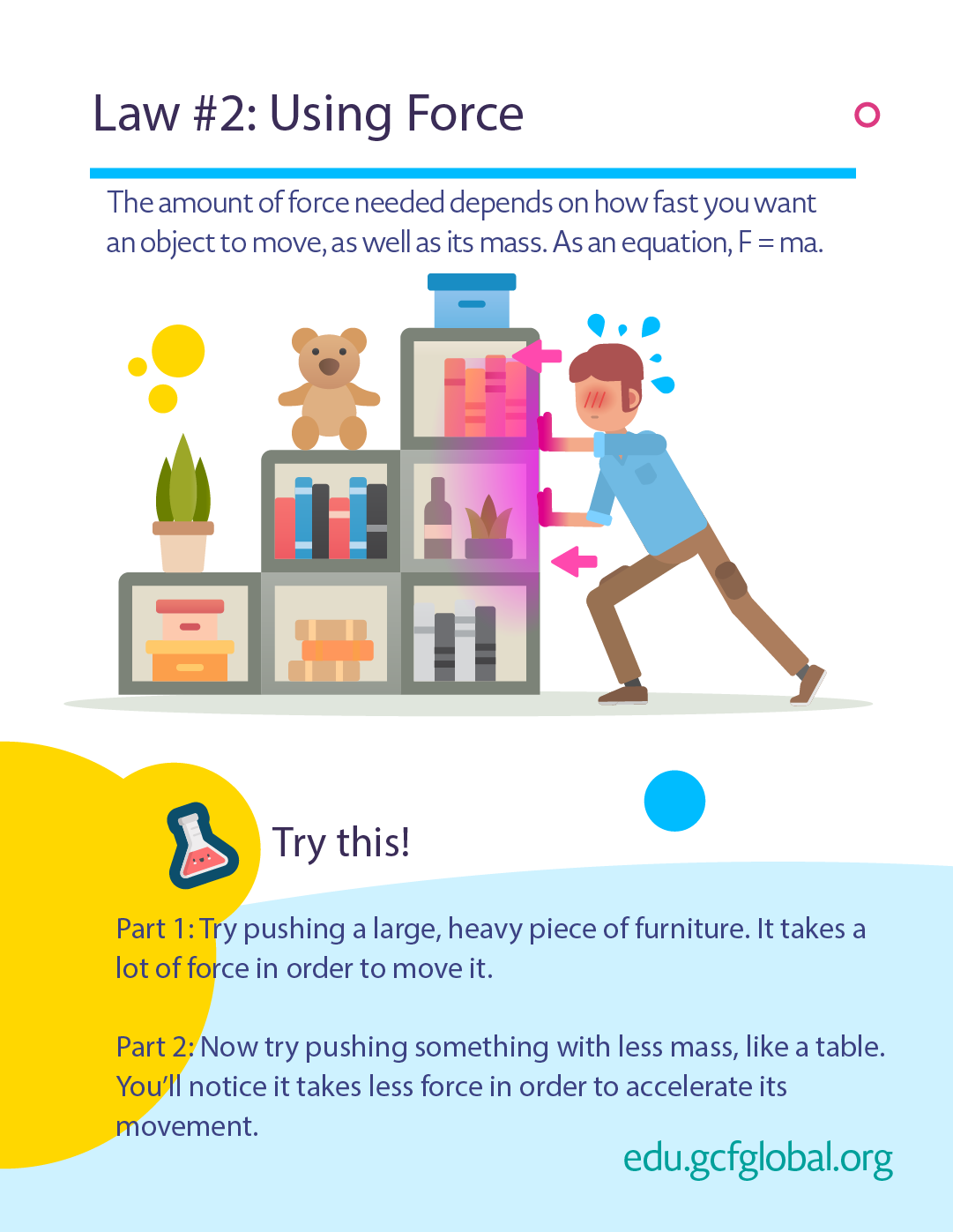Newton's Laws of Motion -
Newton's Second Law

Newton's Laws of Motion
Newton's Second Law


/en/newtons-laws-of-motion/newtons-first-law/content/
Newton's second law explains the relationship between force, mass, and acceleration.
In the first lesson, we explored how force is needed to move an object. Acceleration refers to the speed at which it moves. There is another element at play here, too, called mass.
Mass is the amount of material an object is made of. How fast an object moves depends on how light or heavy it is, and the mass of an object affects its weight.
So in order for an object with a higher mass to accelerate more quickly, more force must be applied. Let's take a look at some examples...
Tony has to push his car when it breaks down. The more force he uses, the faster it moves.

But if he pushes his bicycle using the same amount of force, it will move faster than the car because of its lighter mass.

If we think about pushing a shopping cart, you have to apply more force in order to move the cart as you fill it up. That’s because the mass increases as you add each item, making it harder to accelerate down the aisle.

As an equation, Force = mass x acceleration (F = ma).

Next up, we’ll cover Newton’s third (and final) law of motion…
/en/newtons-laws-of-motion/newtons-third-law/content/